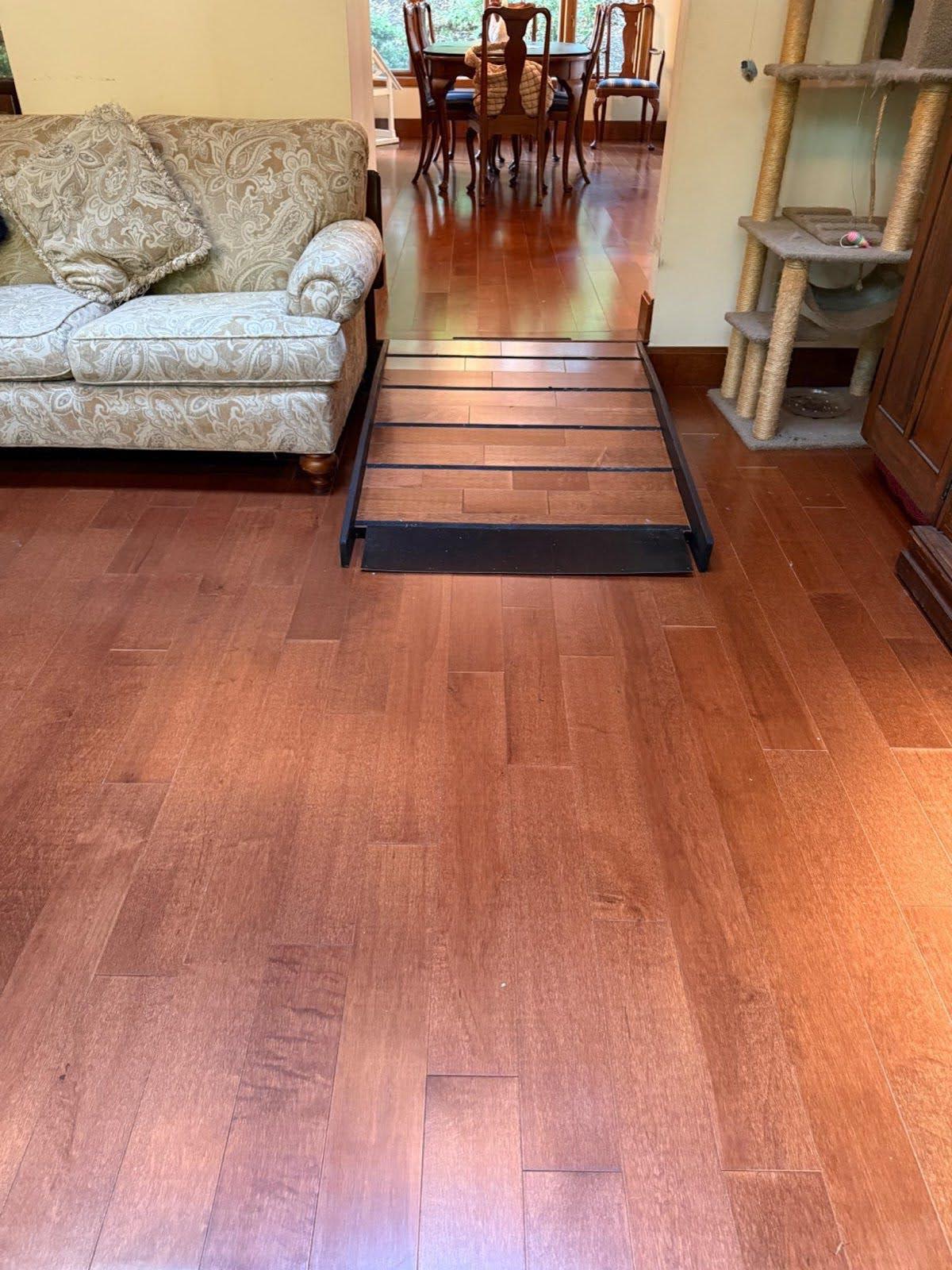As the hidden backbone of your flooring system, your subfloor is there to keep your flooring solid, quiet, and safe. Without it, even the most beautiful floors won’t last. That's why if you notice floors that are sagging, squeaking, or feel uneven to walk on, you may need to check for damage hiding underneath that can prematurely wear out your flooring.
Catching the issues early on lets you repair the damage before it’s widespread. Here, we'll cover how to spot subfloor damage, when it’s best to repair or fully replace, and how to protect your subfloor from damage.
If you have a damaged subfloor that needs repairing or replacing, you can reach out for a free consultation with the Floor Coverings International® of Metro Southeast Kansas City team and get professional subfloor service today.
Schedule An In-Home Consultation
6 Signs Your Subfloor Needs Repair
Since your subfloor is covered with your finished floors, issues aren’t always obvious, but there are some warning signs you can watch out for. Here are a few telltale signs that your subfloor may need repair:
- The floors are spongy or bouncy: If walking across the floor feels uneven or springy, you may have moisture damage, rotting boards, or a termite issue to take care of.
- You hear frequent squeaks: While it can be perfectly normal for floors to squeak, persistent or loud squeaks can mean parts of the subfloor have come loose.
- There is moisture damage: Watch out for swelling, softness, and discoloration that can signal water damage.
- You suspect mold or notice musty smells: What does subfloor mold look like? If you see dark spots or patches on the subfloor that have a musty odor, you may have a mold issue.
- There is surface-level flooring damage: Cracked tile, buckling laminate, and damp carpet can also indicate an issue with the stability of the subfloor.
- You see visible damage during renovations: Some issues you might not notice until the floors are removed and you see the subfloor directly. This could be where you identify rotting boards, water damage, or mold.
Should You Repair or Replace?
Maybe you’ve noticed a few indicators that your subfloor needs attention, but how can you determine when to repair and when to replace the subfloor? Let’s walk through some considerations:
When to Repair Your Subfloor:
Making a few repairs is much easier and less expensive than replacing the entire subfloor. By addressing the problems early, you can save time, money, and hassle down the road. If the damage is relatively localized and the rest of the subfloor is sturdy, or if the boards are strong but the joints need reinforcement, a simple repair may make the most sense.
When to Replace Your Subfloor:
When repairs aren’t enough and the damage is widespread or the structure has weakened over time, you may have to completely replace the subfloor to ensure the safety and stability of your floors.
These are a few reasons your subfloor may need more than a simple repair:
- There’s widespread water or mold damage. If the damage reaches several parts of the subfloor, the mold can be a safety hazard, and the water damage can impact the structural integrity of the floors.
- The subfloor is structurally compromised. When you're dealing with a warped or soft subfloor that can’t offer the structural support it’s designed to, a full replacement will help you restore the stability your floors need.
- You want to reset the clock with strong floors. If you’re planning a large remodel, having your older subfloor replaced at the time of your floor renovation makes sure your subfloor is strong and sturdy enough to hold your new floors for the next several years.
How to Prevent Subfloor Damage
Have you been wondering if the subfloor can get wet? It can, but you don’t want it to. Issues like plumbing leaks or high humidity can make the boards damp, and moisture can eventually lead to warping, mold, or structural issues. While it’s true that your subfloor won't last forever, with a little bit of care and attention, you can keep it strong and stable for many years.
Here are a few steps you can take to prevent early damage to your subfloor:
- Control the humidity of your home. By regulating your home’s humidity, you can avoid excessive moisture that could weaken or damage your floors and subfloors.
- Watch for leaks. It's good to regularly check plumbing and appliances to make sure there aren’t unnoticed leaks dripping into your floors.
- Include a moisture barrier under your floors. Moisture doesn’t only come from leaks; ground moisture can also seep in and damage your floors. Adding a barrier under the subfloor in humid areas can protect against excess moisture.
- Choose the right flooring. By picking floors that fit your climate and lifestyle, you can protect the underlying subfloor and extend the life of the whole flooring system.
Give Your Floors a Strong Foundation
Durable floors depend on a strong subfloor for stability and support. Working with a team that knows how to effectively diagnose the issues can help you ensure your flooring system is prepared to support your floors, so they sit evenly and last longer.
You can count on our team at Floor Coverings International® of Metro Southeast Kansas City to handle your subfloor with care. We'll quickly diagnose the issue, properly dispose of damaged materials, and restore the stability of your floors.
If you suspect your subfloor is damaged and needs repair or replacement, reach out for a free in-home consultation or call us at (816) 441-4133 for professional Kansas City, Missouri subfloor service today.



